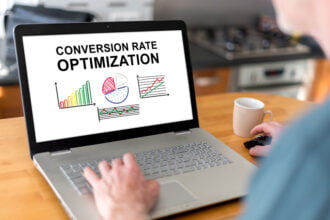Any sports player or fan should be aware that data analysis has become a significant part of sports. As individuals and teams seek to gain an advantage over the opposition, analyzing data and using the results to shape your performance is one of the best ways to get ahead.
Whether you are an English Premier League soccer team, a Moneyball baseball team, a roller skater, a golfer, or a National Hockey League franchise, the collection and use of data in sports are now commonplace. According to Bloomberg, the market for sports research and data analysis net worth is expected to be around $8.4 Billion by 2026.
In this brief article, we explore the impact of data analytics on sports.
Data in Individual Sports
Data analytics are commonplace in individual sports such as roller skating and can be used in a variety of ways. For example, when going for a skate fitting, the use of the 3D skate lab gives a 3D scan of your feet and suggests the most suitable skate style for you. For example, it can recommend the most suitable roller skates for wide feet, sprinters, or roller hockey players.
In terms of performance, data techniques such as tracking learning detection and video analysis, provide roller skate coaches with tools in which they can convey suitable technical improvements to skaters.
In sports such as speed skating, knowing and learning the technical improvements required to maximize speed can be the difference between finishing in first or second place.
Helping You Win
Data is used in sports to gain an advantage over the opposition. Depending on the sport, data is used in different ways. For example, in soccer, management will use key performance indicators to review whether a prospective transfer of a player should take place. These indicators may include the player’s sprint speed or distance covered per goal.
Increasingly, soccer teams look at stats such as expected goals (Xg) as a key metric to understand underlying performance levels other than the actual scoreline. The cut-through of soccer stats is so clear that even pundits after the game are now discussing Xg as a tool to better describe the narrative of a soccer game.
When Leicester City blew everyone away to win the English Premier League in 2015-16, it was credited largely to their extensive data analytics team, who managed to use data to craft a perfectly balanced squad that implemented the manager’s style of play.
Another of the most famous pioneering examples of using data analytics to improve performance was made in the Moneyball film. Billy Beane, General Manager of the Oakland Athletics baseball team used sabermetrics to help recruit players for the team, despite having a shoestring budget. Oakland Athletics become famous in the 2002 season for a 20-game winning streak.
Driving Consumer Engagement
Data analytics don’t only impact the way individuals and teams play a sport, but also how the general public engages with the sport.
Most large-scale sports organizations have staff responsible for monitoring digital engagement and online content to boost engagement with a sporting individual or team. Using online tools such as social media, digital and communication experts use online analytics to best shape marketing campaigns.
For example, a sports team that wants to connect with millennials may use Instagram as the primary tool to roll out a marketing campaign. But if their focus was Gen Z, they may use other social media sites such as Snapchat to attract the younger audience.
Benefiting The Sport Ecosystem
The whole sporting ecosystem also gains a benefit from the increase in data analytics. For example, analytics are increasingly used to help manage crowds inside stadiums, manage congestion before and after matches, and even help sell more food and drink inside stadiums.
Many large-scale sports teams now partner with retailers, payment providers, and telecommunications firms that can provide real-time data on consumer behavior. Understanding crowd behavior in stadiums with large crowds can be particularly helpful as it can guide the messaging and communication strategy with the crowd.
Data and Equipment
Data is very popular for individual sports such as golf and tennis to help guide players to purchase certain equipment pieces.
For example, you may wish to purchase an expensive Driver to boost your golf game. Many YouTubers and golf professionals will use devices such as launch monitors to conduct product reviews on golf clubs to give you quick insights into whether certain clubs are a match for your playing style.
Launch monitors in golf are also great for assessing your performance. Real-time insights into your carry distance, club head speed, and spin revolutions can help you understand your golf game better.
Final words
Data in sports is a serious business. It can be used in a variety of different ways from understanding the strengths and weaknesses of the opposition, improving the understanding of your game, improving digital engagement of yourself or your team, helping you select the best equipment piece, and also helping with crowd management.









